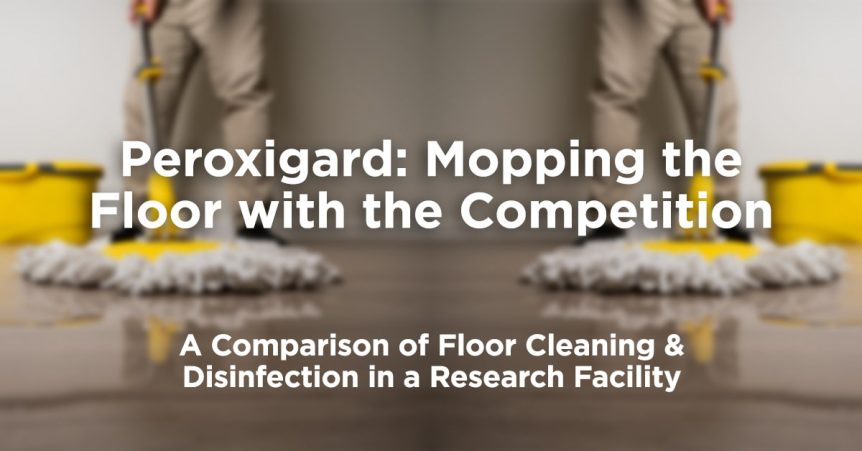Flooring is a fundamental area requiring regular cleaning and disinfection in animal research facilities. However, floor disinfection comes with a unique set of challenges and considerations when compared to smaller high-touch surfaces
and equipment.
When determining your facility’s flooring protocols, it is important to select an effective disinfectant chemistry and also pair the solution with the optimal application method. A key example is the known effect of “Quat binding”.
It has been shown that Quat disinfectants may bind to microfiber and cotton, thereby reducing the Quat concentration of the solution and decreasing disinfection efficacy when applied to surfaces.
In relation to mopping, facilities typically choose between cotton string mops or newer microfiber mop heads to get the job done. In a recent study published in JAALAS, researchers evaluated different disinfectants (Quat vs. Accelerated
Hydrogen Peroxide® (AHP®)) paired with particular mop systems (cotton string mop vs. microfiber mop) and compared the effectiveness on rodent vivarium floors.
Overall, the study results revealed:
- Both AHP® methods (with Cotton String mop and Microfiber) were significantly more effective at reducing ATP levels than any Quat methods1
- The Quat and cotton string mop method was associated with significantly more bacterial contamination after mopping, while all other methods reduced bacterial contamination1
- In comparing the re-use of a cotton string mop with different disinfectant technologies, a Quat disinfectant performed significantly worse in reducing bacterial contamination as compared with all other
methods1
The results highlight that Peroxigard powered by AHP® is a trusted and effective solution for your vivarium floor cleaning and disinfection procedures. To access the full peer-reviewed study, click here.
REFERENCE
1.
Capria, V. M., Fernandez, M. O., Walker, M. M., & Bergdall, V. K. (2022). Comparison of Floor Cleaning and Disinfection Processes in a Research
Animal Facility. Journal of the American Association for Laboratory Animal Science: JAALAS, 61(6), 644–649.
https://doi.org/10.30802/AALAS-JAALAS-22-000042



